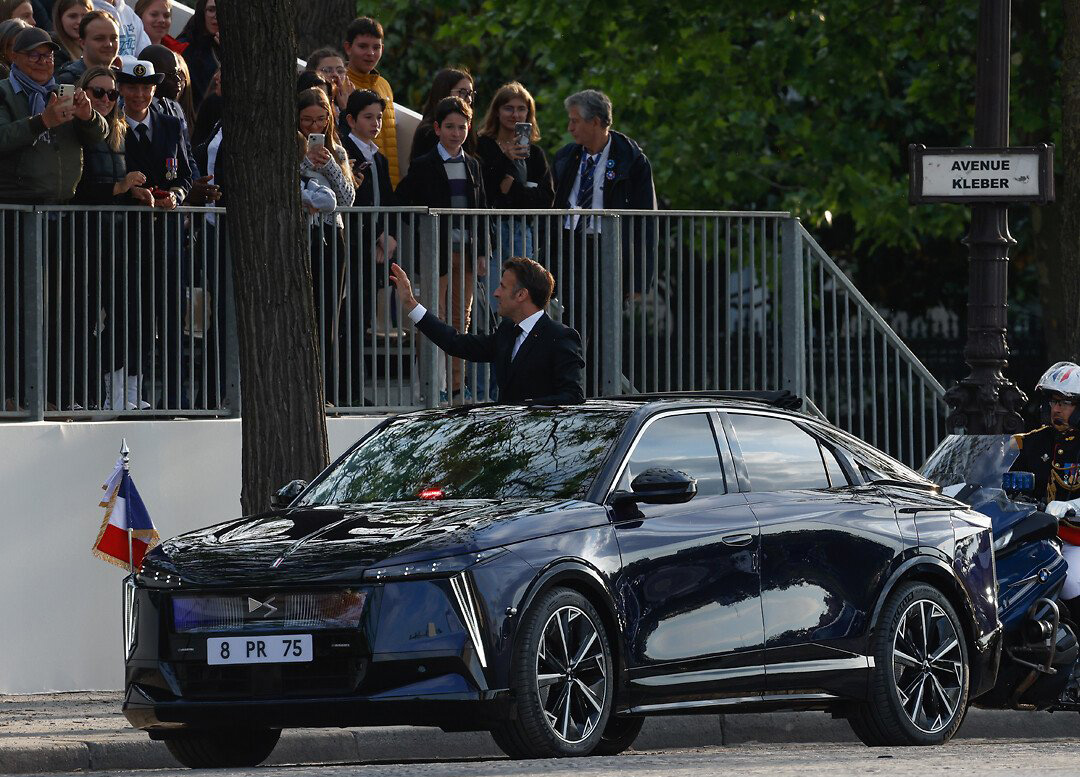Drivestyle: celebrities on four wheels
Whether pop, gymnast or movie star, they all like to be on the road, preferably on four wheels.
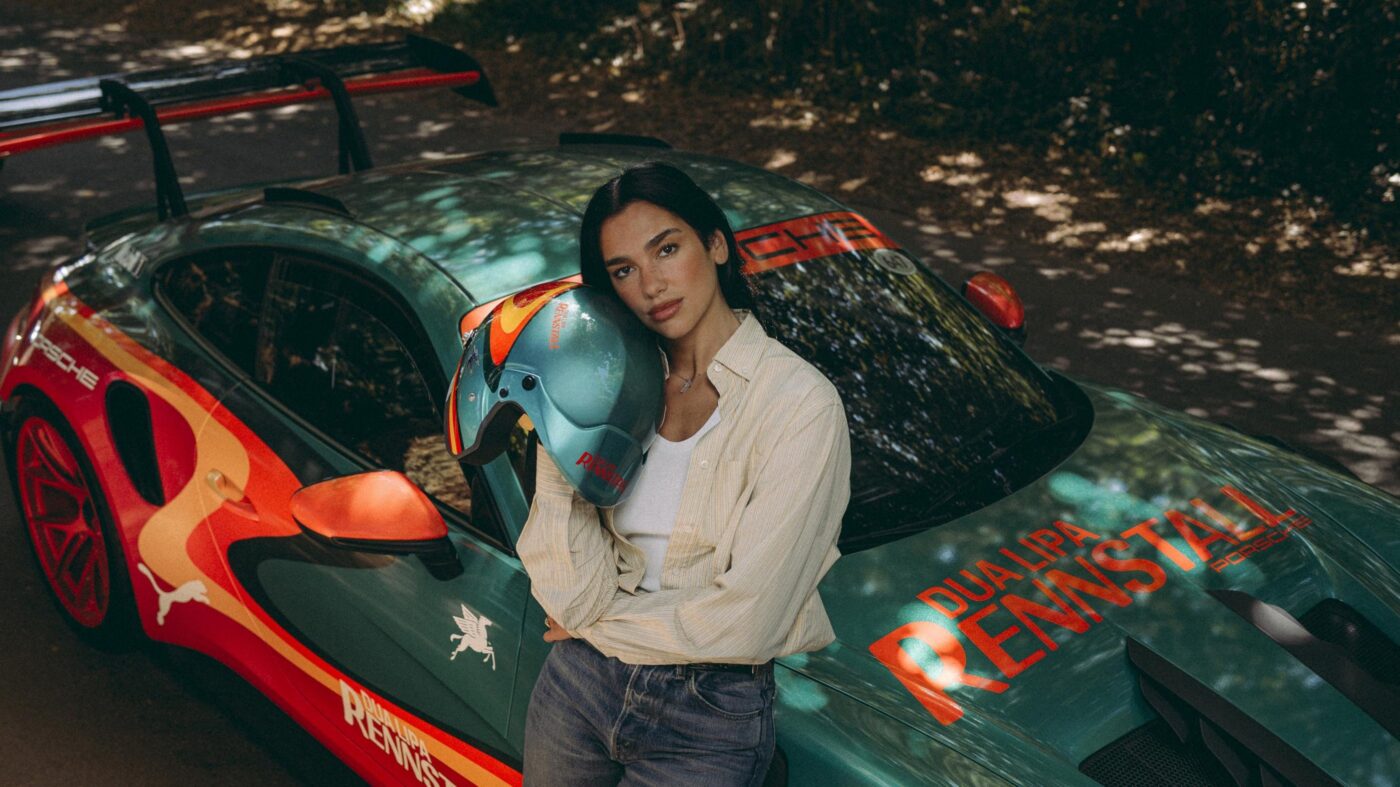
Pop star Porsche does good
As a singer, Dua Lipa inspires the masses; as an ambassador for Porsche, she is the face of a luxury brand. At the end of May, the three-time Grammy winner with Kosovan-Albanian roots unveiled a 911 GT3 RS at the Formula 1 GP in Monaco, which she co-designed herself - with turquoise, orange and red paintwork in the style of the 1970s. RM Sotheby's has now auctioned off the sports car for a good cause. The result: 340,000 francs. The proceeds will go to the Sunny Hill Foundation, founded by Dua Lipa in Pristina, Kosovo, which promotes cultural development, educational opportunities and support for young people.
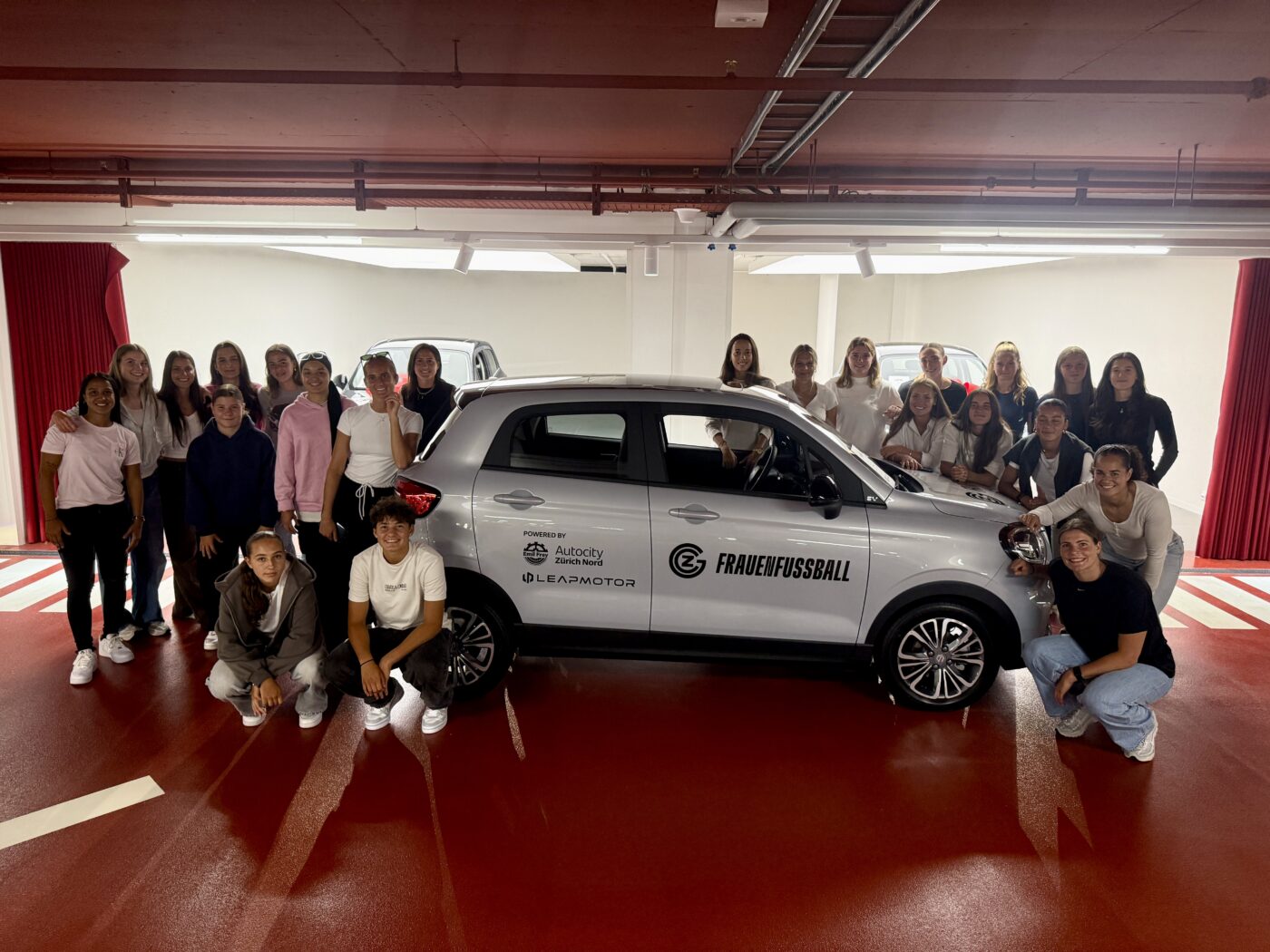
Women's power meets electric power
They are among the best female footballers in the country and are now going electric: the GC women drive Leapmotor. This is made possible by Autocity Emil Frey Zürich-Nord, which has handed over 15 cars to the team from Zurich as part of its sponsorship of the Women's Super League. The commitment is part of Leapmotor's strategy with the aim of establishing strong partnerships in the sports and lifestyle sector. Why does this fit? "The GC women stand for performance, team spirit and leading by example," writes Leapmotor.
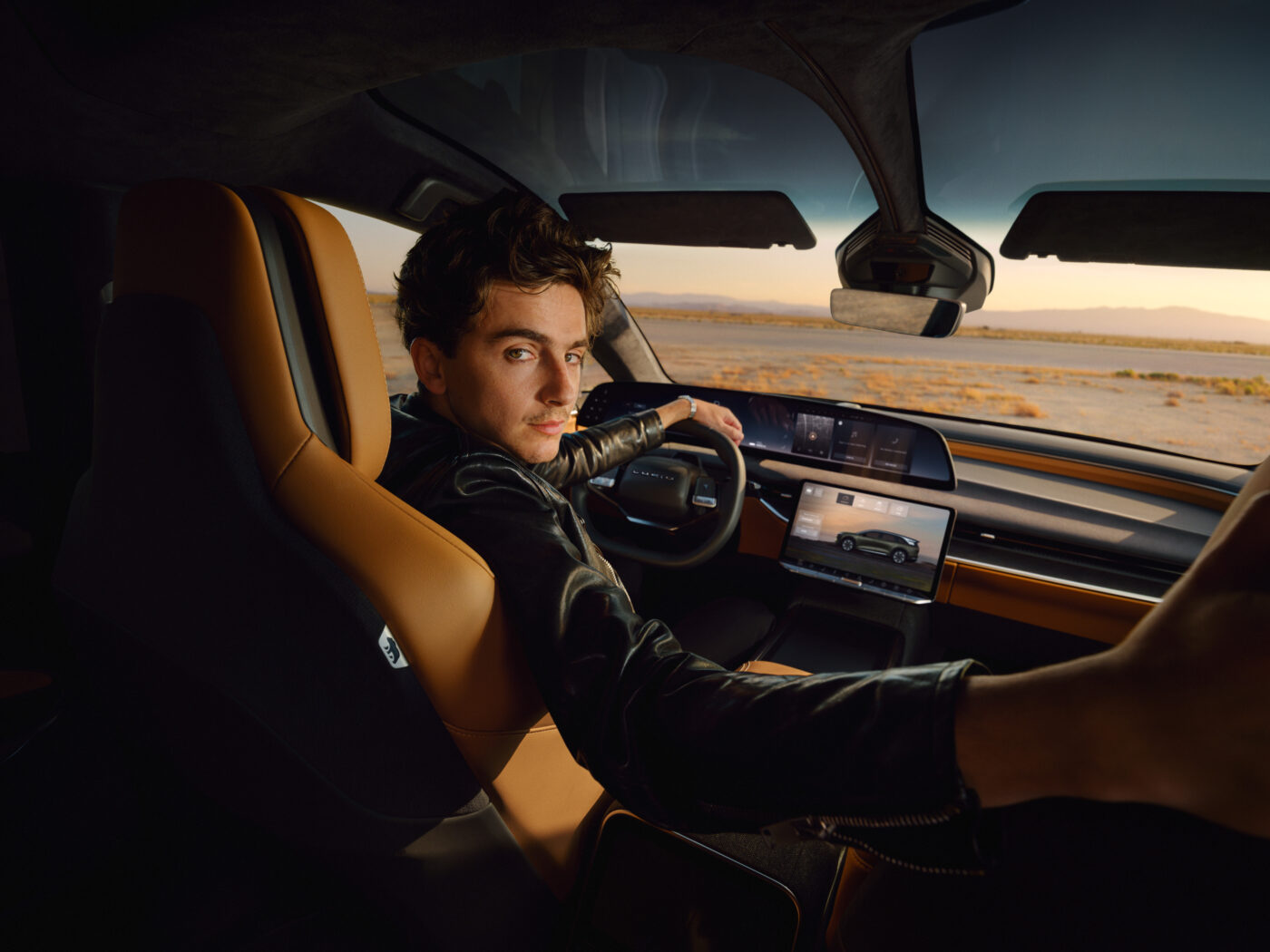
Star proud as "Oscar"
How exciting when a celebrated Hollywood actor rides your brand. That's what Lucid thought and has now put its money where its mouth is. The US electric car manufacturer proudly announces that Timothée Chalamet, who was already seen at the wheel of a Lucid Air in 2023, will be a global brand ambassador for several years. From the fall, the 29-year-old Franco-American, who has already been nominated twice for an "Oscar", will appear in the marketing campaign for the new Lucid Gravity electric SUV.
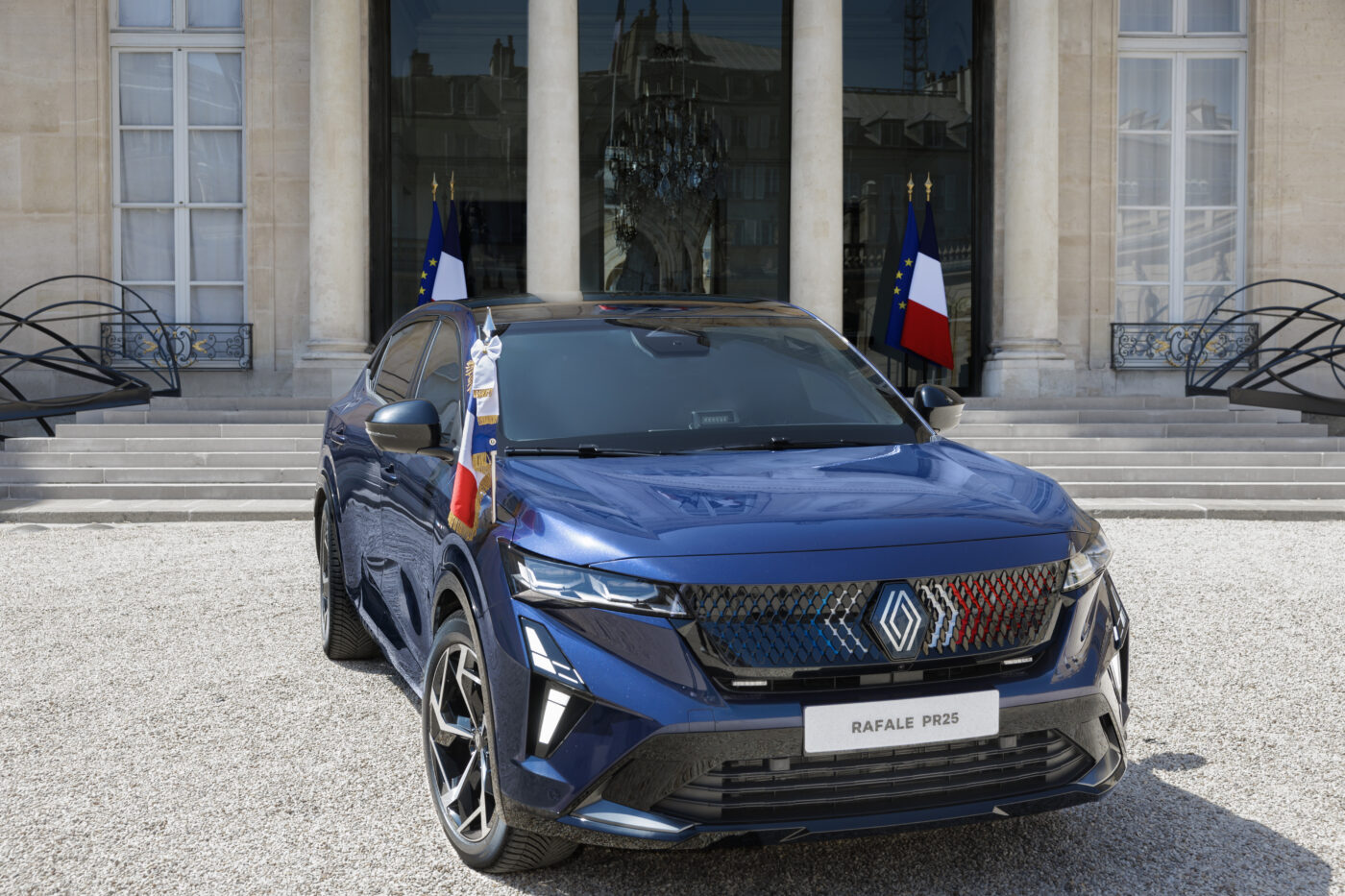
For Monsieur le Président
Emmanuel Macron received his new office on wheels just in time for the French national holiday: the Renault Rafale Présidentiel. Naturally armored - and equipped with patriotism. The paintwork is called "Bleu Présidence" and sparkles in blue, white and red, while the radiator grille features the French national colors. There is also exclusivity for the president on the inside: The dashboard and steering wheel are finished in black Pyrenean marble with white veins running through it. Oh là là!

Icons drive icons
It has long enjoyed cult status: the G-Class from Mercedes Benz. At the beginning of August, the 600,000th G rolled off the production line in Graz, Austria - a G 580 EQ. Artistic gymnastics icon Simone Biles (30 gold medals) is also enthusiastic about this off-road legend. After the 2024 Olympic Games in Paris, she presented her new white G on Instagram as the successor to her black G. Curious fact: Biles (previously in a Ford Focus, Cadillac CTS and Range Rover) is 1.42 meters tall, her car is two meters high.
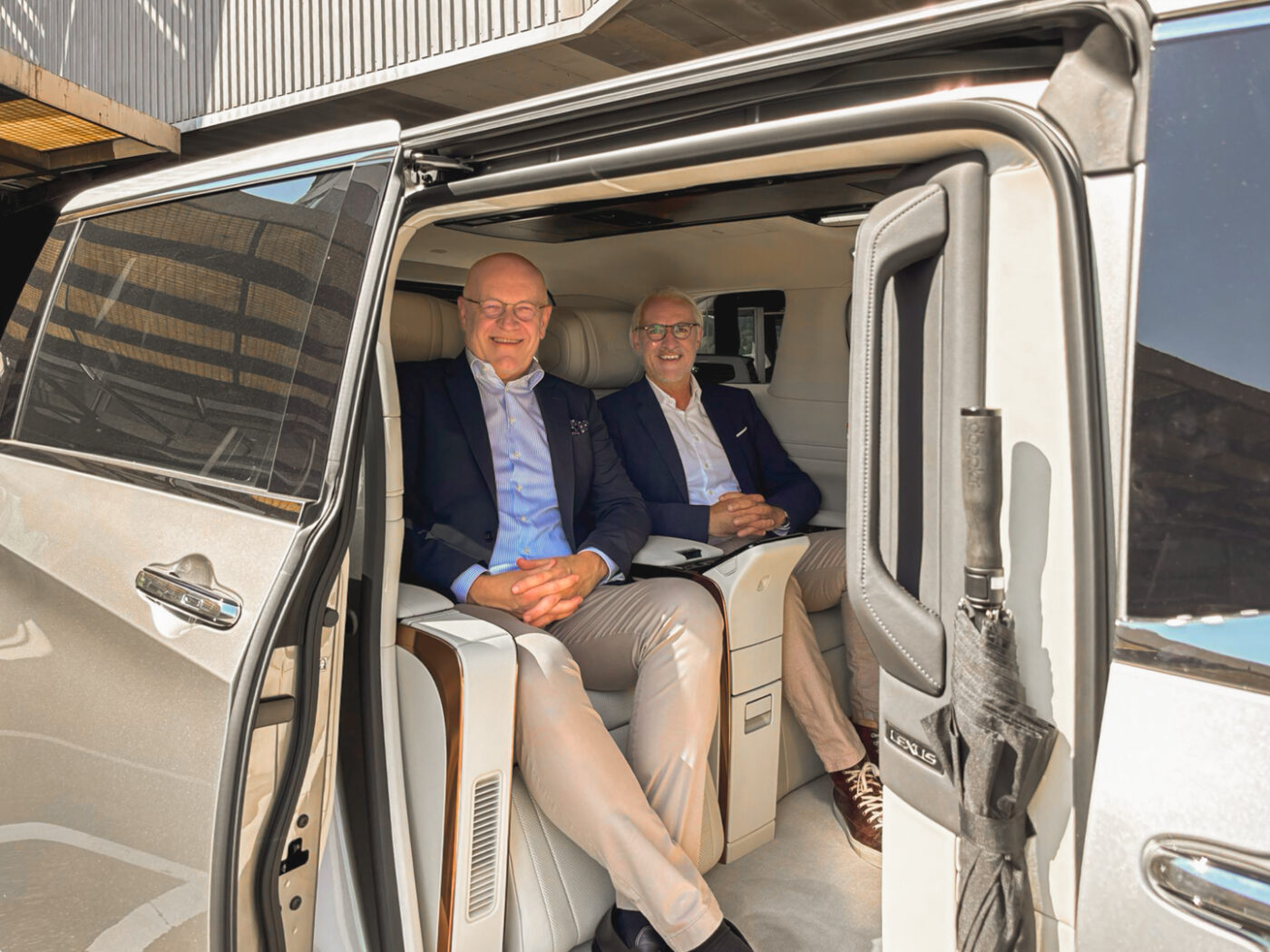
A first-class shuttle
Anyone who flies First Class or treats themselves to the lounge or even the private suites of the Zurich Airport VIP Service does not want to be chauffeured to the jet in a wooden class. That's why there are now seven Lexus LM 350h VIPs on shuttle duty at Zurich Airport. The van with 250 hybrid horsepower only has four seats, but the two lounge chairs in the back offer pure pampering: electrically adjustable, massage function, heating and ventilation. The passenger compartment is separated from the chauffeur's compartment by a 48-inch monitor.









 Even though the Leaf is based on the Renault platform, it has little in common with the French manufacturer's models apart from the technical basis. It is much more oriented towards its big brother, the Nissan Ariya, which uses the same platform. The Leaf shares the closed radiator grille, the V-shaped downward-pointing lights and the curved roofline with the Ariya. Nissan has also hidden a whole series of so-called "Easter Eggs" in and on the car: the number combination "2-3" can be found in various places, including in the rear lights, which consist of two vertical and three horizontal elements. "2-3" is pronounced "Ni-San" in Japanese - almost like the manufacturer's name.
Even though the Leaf is based on the Renault platform, it has little in common with the French manufacturer's models apart from the technical basis. It is much more oriented towards its big brother, the Nissan Ariya, which uses the same platform. The Leaf shares the closed radiator grille, the V-shaped downward-pointing lights and the curved roofline with the Ariya. Nissan has also hidden a whole series of so-called "Easter Eggs" in and on the car: the number combination "2-3" can be found in various places, including in the rear lights, which consist of two vertical and three horizontal elements. "2-3" is pronounced "Ni-San" in Japanese - almost like the manufacturer's name. The Leaf also skillfully adopts the design language of the Ariya in the interior, with a two-spoke steering wheel and the two screens, which are based on the simple dashboard. The center console does not extend all the way to the front, which creates a liberated feeling of space - however, the selector lever also had to make way for four push buttons, which require some getting used to. Apart from that, the new Leaf drives as you would expect from an electric compact SUV, with smooth steering, softly tuned dampers and even acceleration. Prices for the new Leaf have not yet been set and it is expected to arrive in Europe in early 2026.
The Leaf also skillfully adopts the design language of the Ariya in the interior, with a two-spoke steering wheel and the two screens, which are based on the simple dashboard. The center console does not extend all the way to the front, which creates a liberated feeling of space - however, the selector lever also had to make way for four push buttons, which require some getting used to. Apart from that, the new Leaf drives as you would expect from an electric compact SUV, with smooth steering, softly tuned dampers and even acceleration. Prices for the new Leaf have not yet been set and it is expected to arrive in Europe in early 2026.
 Nissan makes no secret of the close relationship: "Everything that is painted in the color of the car is from us. We took the rest from Renault," was the open statement made at the presentation of the new model. Which is certainly no bad thing, as it currently holds the title of "Car of the Year" and offers more charm and driving pleasure than almost any other small electric car.
Nissan makes no secret of the close relationship: "Everything that is painted in the color of the car is from us. We took the rest from Renault," was the open statement made at the presentation of the new model. Which is certainly no bad thing, as it currently holds the title of "Car of the Year" and offers more charm and driving pleasure than almost any other small electric car.

 Definitely a risk for e-car owners. With a subscription, you don't have to worry about this and can simply switch to a new model when the subscription expires, perhaps even with a longer range. Many uncertainties surrounding the purchase of an e-car or, in the case of companies, the integration of e-vehicles into the fleet can thus be eliminated. In addition, a subscription during the use of the car may clear up any unanswered questions about the charging infrastructure - whether at home, in the office or during the first vacation trip, which had always been put forward as an argument against an e-car due to range anxiety.
Definitely a risk for e-car owners. With a subscription, you don't have to worry about this and can simply switch to a new model when the subscription expires, perhaps even with a longer range. Many uncertainties surrounding the purchase of an e-car or, in the case of companies, the integration of e-vehicles into the fleet can thus be eliminated. In addition, a subscription during the use of the car may clear up any unanswered questions about the charging infrastructure - whether at home, in the office or during the first vacation trip, which had always been put forward as an argument against an e-car due to range anxiety.
 There is enough space in the front, but there should be a little more legroom and headroom in the rear. At 308 liters, the trunk isn't exactly huge, but it's enough for everyday use and even a slightly larger shopping trip. If necessary, the two rear seats can be folded down to create up to 1037 liters of storage space, which is enough for a week's shopping. The seats with their vegan leather upholstery are really comfortable and also nice to look at. The little Dolphin Surf also impresses with its 10.1-inch central display for infotainment and navigation, which can be rotated at the touch of a button.
There is enough space in the front, but there should be a little more legroom and headroom in the rear. At 308 liters, the trunk isn't exactly huge, but it's enough for everyday use and even a slightly larger shopping trip. If necessary, the two rear seats can be folded down to create up to 1037 liters of storage space, which is enough for a week's shopping. The seats with their vegan leather upholstery are really comfortable and also nice to look at. The little Dolphin Surf also impresses with its 10.1-inch central display for infotainment and navigation, which can be rotated at the touch of a button. But the BYD is very focused on safety. As soon as you turn your gaze briefly to the central display, you are warned. "Watch out!" says the nice lady from off-screen as soon as the small surveillance camera in the A-pillar notices that the driver is not looking at the road. Well-intentioned, but a little overcautious and overzealous, so it soon becomes a little annoying. But it doesn't matter, after all, most driver assistance systems can be switched off and the otherwise often intrusive cruise warning system is also very restrained in the Dolphin Surf. Overall, in addition to driver and front passenger airbags, curtain airbags and front side airbags, as well as intelligent cruise control, an automatic emergency braking system, lane departure warning and automatic high beam control, the Chinese car certainly scores highly in terms of occupant protection.
But the BYD is very focused on safety. As soon as you turn your gaze briefly to the central display, you are warned. "Watch out!" says the nice lady from off-screen as soon as the small surveillance camera in the A-pillar notices that the driver is not looking at the road. Well-intentioned, but a little overcautious and overzealous, so it soon becomes a little annoying. But it doesn't matter, after all, most driver assistance systems can be switched off and the otherwise often intrusive cruise warning system is also very restrained in the Dolphin Surf. Overall, in addition to driver and front passenger airbags, curtain airbags and front side airbags, as well as intelligent cruise control, an automatic emergency braking system, lane departure warning and automatic high beam control, the Chinese car certainly scores highly in terms of occupant protection.
 If you still want more range, you should order the BYD as a "Boost". This variant is also equipped with the large drive battery, but has a slightly less dynamic electric drive (65 kW/88 hp), which should be enough for an electric range of up to 322 km. If you often drive in the city and not on freeways, it should even be up to 510 km according to WLTP. Incidentally, the same electric drive is also available in the entry-level "Active" version, but in combination with a smaller 30 kWh battery. This has an impact on the price: the "Active" version of the Dolphin Surf is available from CHF 20,990, while the "Comfort" version of the BYD costs at least CHF 28,990; however, compared to other electric vehicles - also in terms of range - this is still a fair offer.
If you still want more range, you should order the BYD as a "Boost". This variant is also equipped with the large drive battery, but has a slightly less dynamic electric drive (65 kW/88 hp), which should be enough for an electric range of up to 322 km. If you often drive in the city and not on freeways, it should even be up to 510 km according to WLTP. Incidentally, the same electric drive is also available in the entry-level "Active" version, but in combination with a smaller 30 kWh battery. This has an impact on the price: the "Active" version of the Dolphin Surf is available from CHF 20,990, while the "Comfort" version of the BYD costs at least CHF 28,990; however, compared to other electric vehicles - also in terms of range - this is still a fair offer.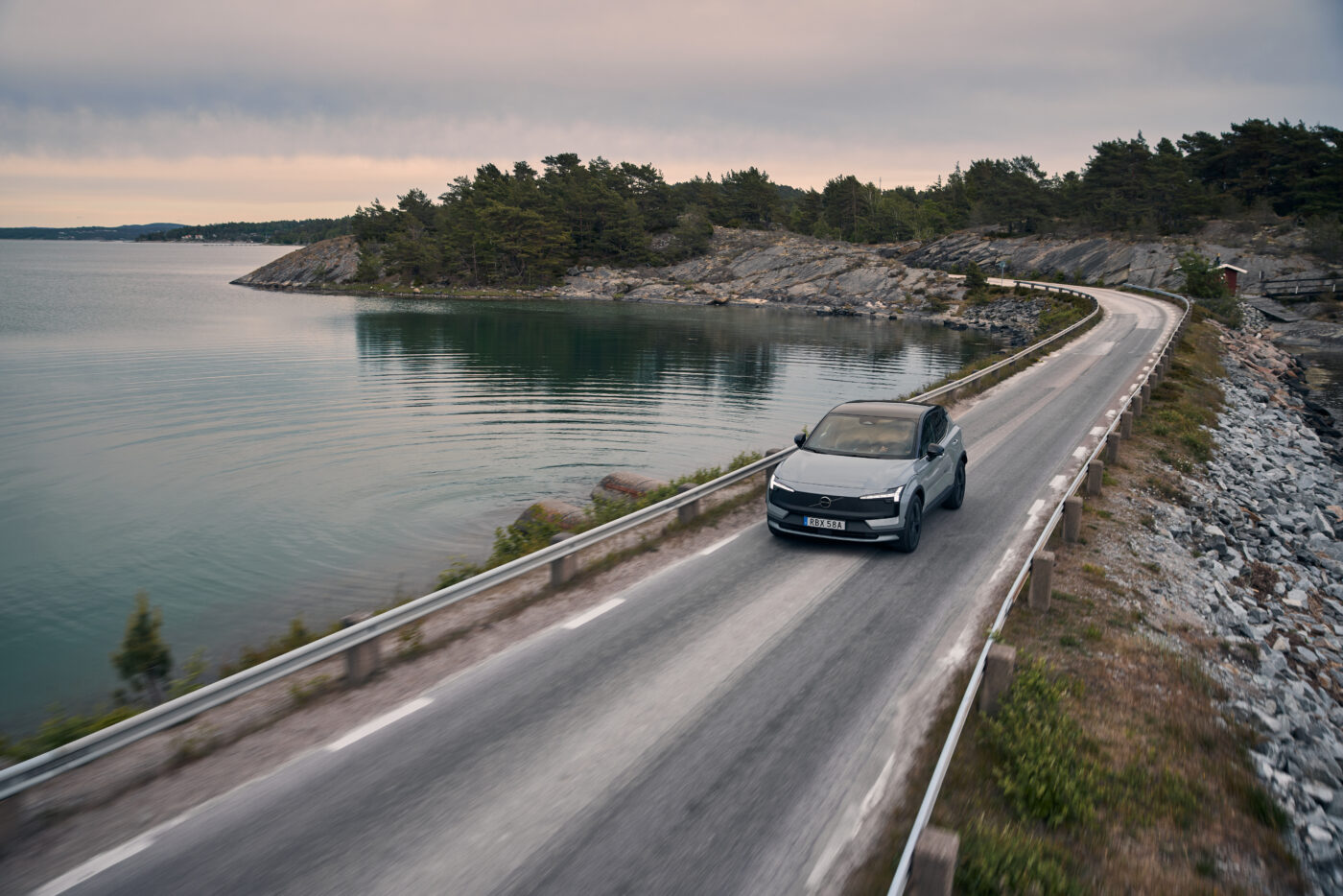
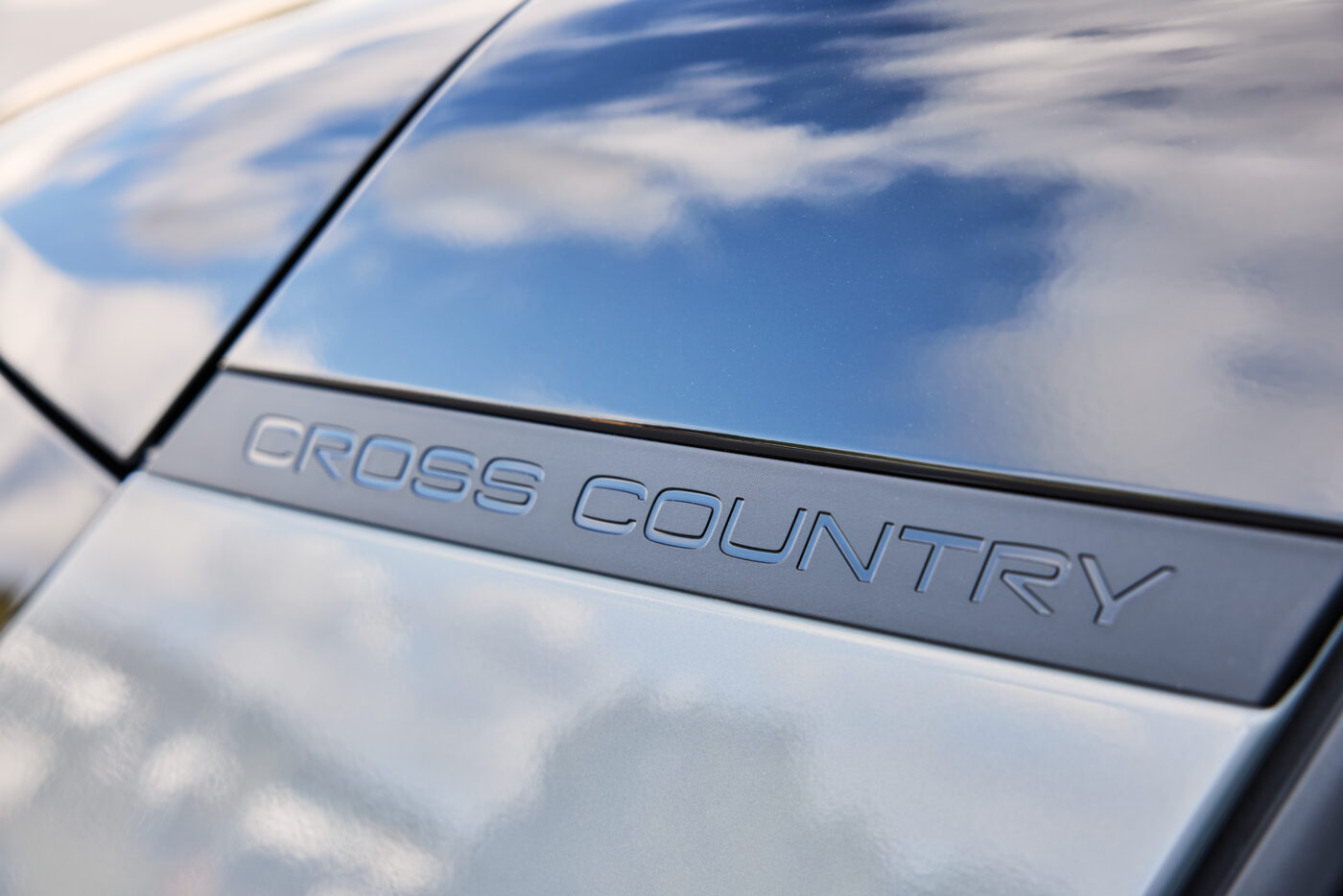 Despite the standard 4×4, the small Volvo is not intended for tough off-road passages and will not move any mountains with the additional 1.9 centimetres and thus a total of 19 centimetres of ground clearance; and yet it is always on the road with a mountain. This is because the striking, dark plastic cover at the front is adorned with not only the elevation curves, but also the coordinates of the highest Swedish mountain. The numbers 67°54'0''N, 18°31'0''E refer to the Kebnekaise. This is located in the very north of Sweden, 70 kilometers west of Kiruna, has an altitude of 2096.8 m above sea level and its Sami name means something like "kettle ridge".
Despite the standard 4×4, the small Volvo is not intended for tough off-road passages and will not move any mountains with the additional 1.9 centimetres and thus a total of 19 centimetres of ground clearance; and yet it is always on the road with a mountain. This is because the striking, dark plastic cover at the front is adorned with not only the elevation curves, but also the coordinates of the highest Swedish mountain. The numbers 67°54'0''N, 18°31'0''E refer to the Kebnekaise. This is located in the very north of Sweden, 70 kilometers west of Kiruna, has an altitude of 2096.8 m above sea level and its Sami name means something like "kettle ridge".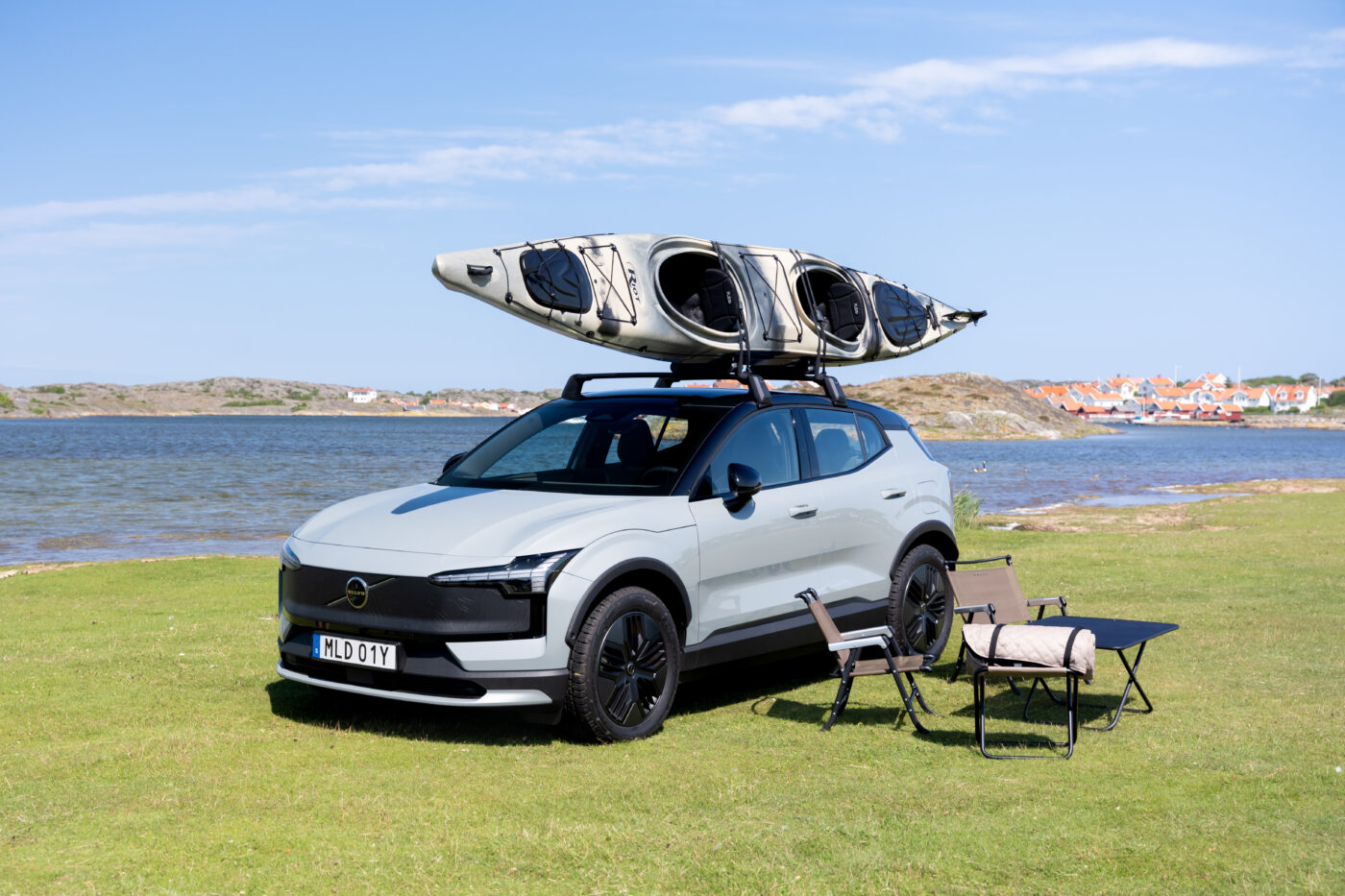 And because Volvo has also recognized the "back to nature" trend, the EX30 Cross Country comes with a whole range of optional accessories. A load carrier, a roof box, 18-inch off-road tires and special mud flaps are designed to provide an even more intensive "Cross Country Experience". Volvo even wants to gradually build up an entire ecosystem with practical equipment for excursions into nature around its Cross Country models.
And because Volvo has also recognized the "back to nature" trend, the EX30 Cross Country comes with a whole range of optional accessories. A load carrier, a roof box, 18-inch off-road tires and special mud flaps are designed to provide an even more intensive "Cross Country Experience". Volvo even wants to gradually build up an entire ecosystem with practical equipment for excursions into nature around its Cross Country models.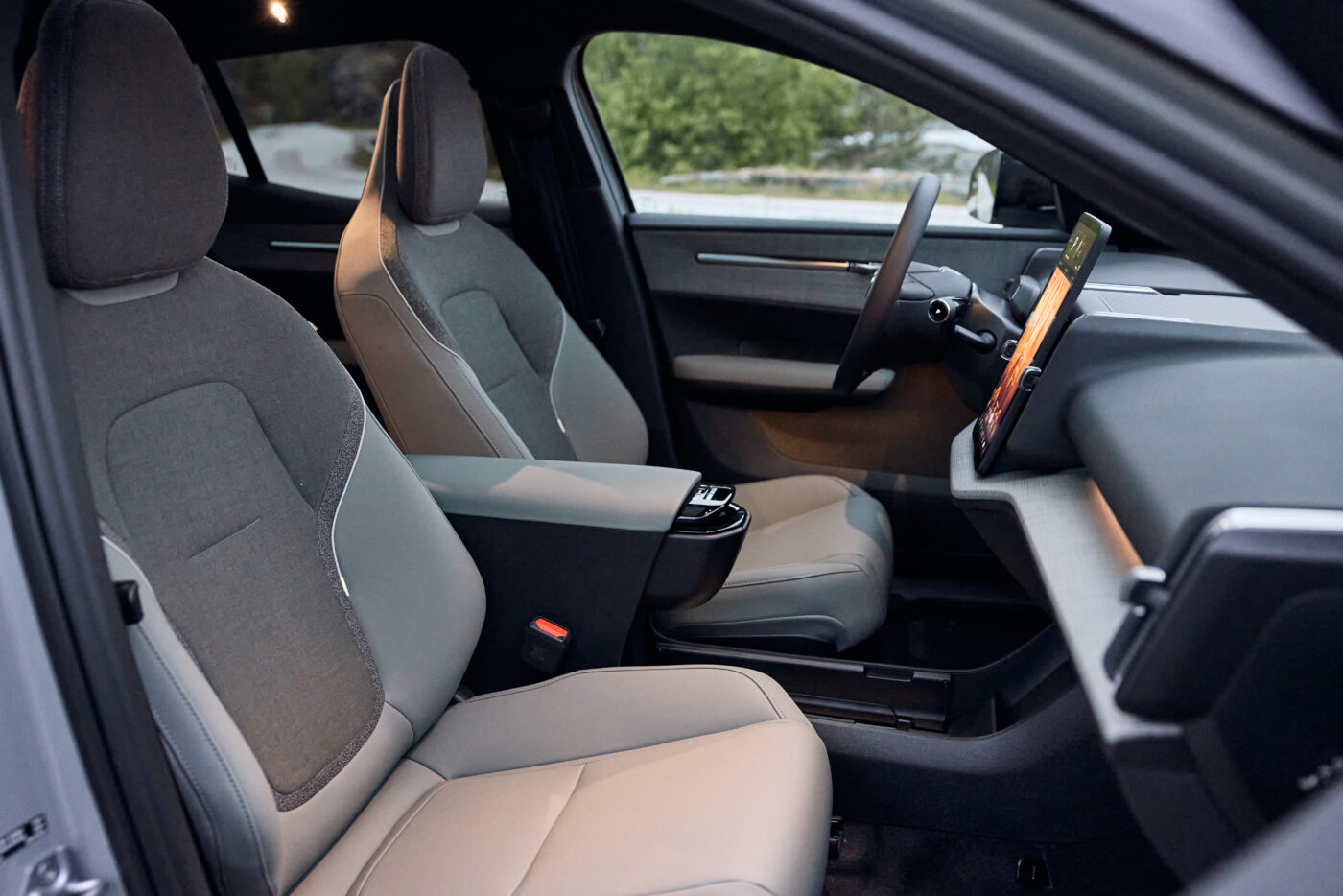 We start the test drive towards the picturesque archipelago near Gothenburg with the 4.23 m long and 1.84 m wide four-wheeler without accessories and glide comfortably over the asphalt. Thanks to the adjustments to the chassis, the five-seater will certainly be able to cope better with slippery conditions and unpaved roads, but the cheeky Viking will certainly be driving on asphalt most of the time. This is where the powerful twin-motor performance drive, which combines two electric motors with a total of 315 kW/428 hp and 543 Nm, makes the most sense. They even catapult the EX30 Cross Country to 100 km/h in just 3.7 seconds! However, if the driving style is too sporty, the electric range of 425 kilometers according to the WLTP is a waste of time. But it doesn't matter, because charging the 69-kWh drive battery from 10 to 80 percent takes just 27 minutes at a fast-charging station thanks to the 153-kW charging power.
We start the test drive towards the picturesque archipelago near Gothenburg with the 4.23 m long and 1.84 m wide four-wheeler without accessories and glide comfortably over the asphalt. Thanks to the adjustments to the chassis, the five-seater will certainly be able to cope better with slippery conditions and unpaved roads, but the cheeky Viking will certainly be driving on asphalt most of the time. This is where the powerful twin-motor performance drive, which combines two electric motors with a total of 315 kW/428 hp and 543 Nm, makes the most sense. They even catapult the EX30 Cross Country to 100 km/h in just 3.7 seconds! However, if the driving style is too sporty, the electric range of 425 kilometers according to the WLTP is a waste of time. But it doesn't matter, because charging the 69-kWh drive battery from 10 to 80 percent takes just 27 minutes at a fast-charging station thanks to the 153-kW charging power.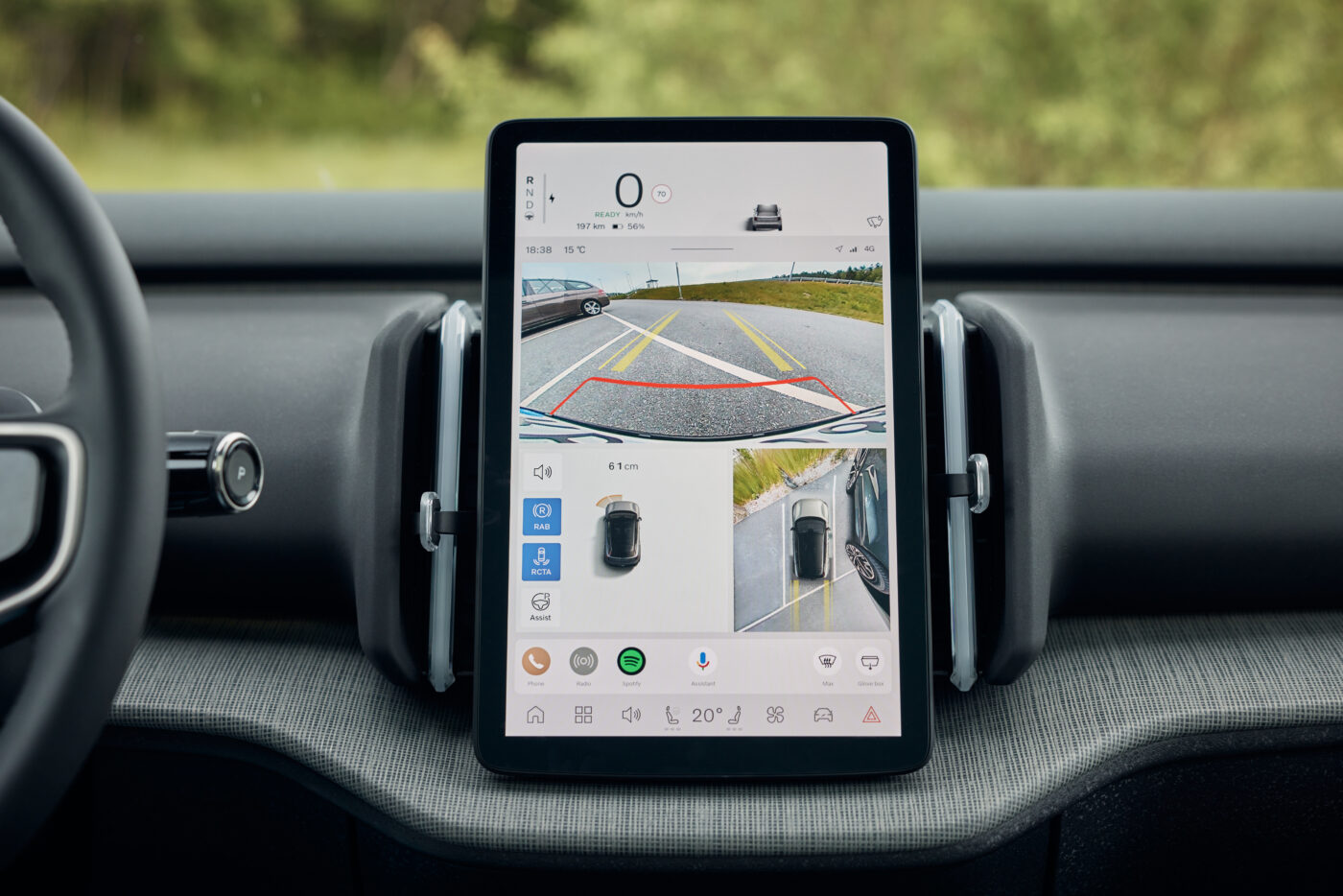 Inside, the Volvo has the usual high-quality feel, right down to the large, hinged storage compartment on the floor between the driver and front passenger, and impresses with its Nordic flair. You even get used to the combination of driver and information display in the center of the dashboard surprisingly quickly and only look for speed and driver information behind the steering wheel for the first few kilometers. The free-standing touchscreen, reminiscent of a tablet, is intuitive to operate and is based on the latest generation Android Automotive infotainment system with integrated Google services.
Inside, the Volvo has the usual high-quality feel, right down to the large, hinged storage compartment on the floor between the driver and front passenger, and impresses with its Nordic flair. You even get used to the combination of driver and information display in the center of the dashboard surprisingly quickly and only look for speed and driver information behind the steering wheel for the first few kilometers. The free-standing touchscreen, reminiscent of a tablet, is intuitive to operate and is based on the latest generation Android Automotive infotainment system with integrated Google services.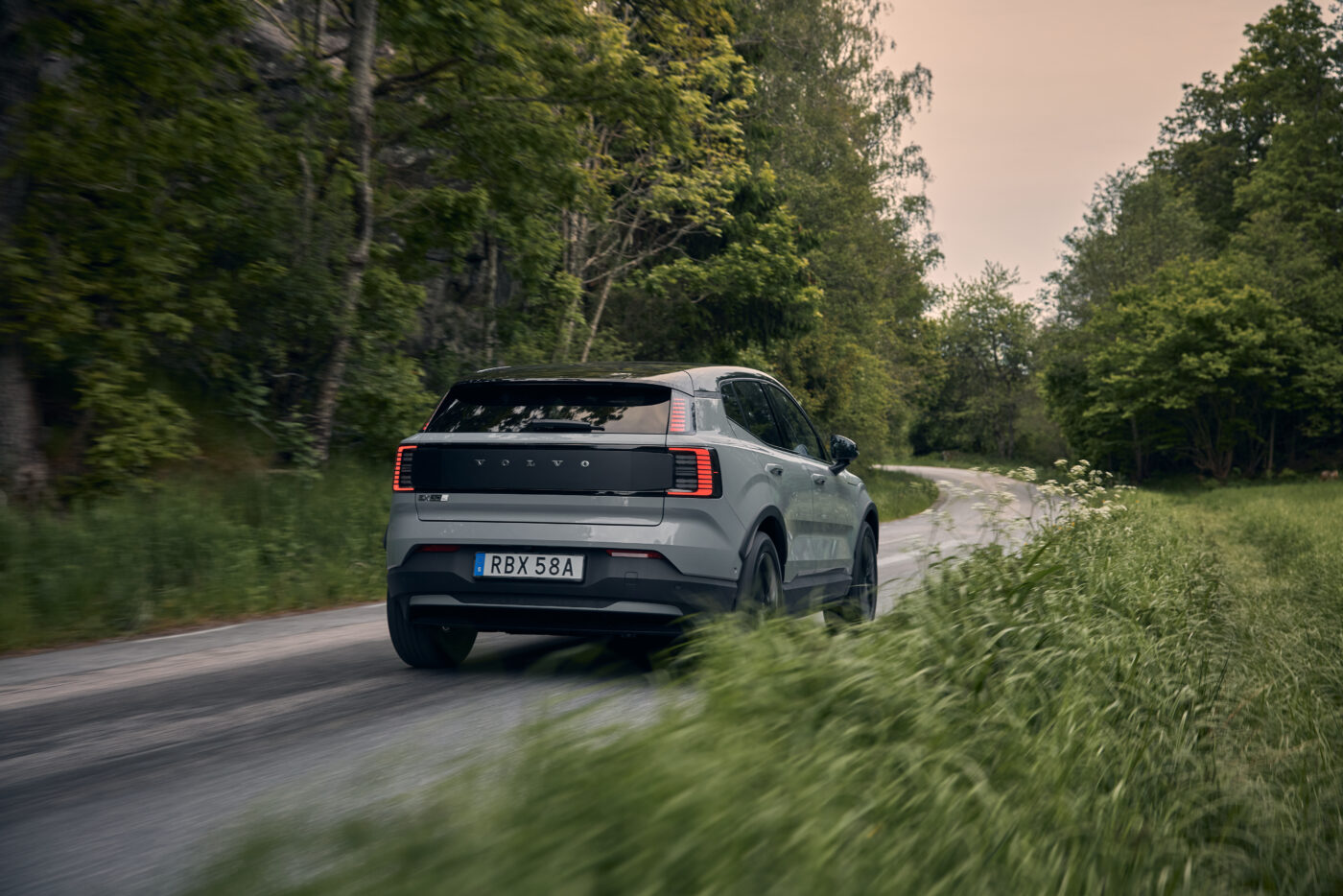


 Familiar design language
Familiar design language In terms of technology, the Sportage comes with new assistance systems, such as the highway assistant, which can now also handle assisted lane changes. Less pleasing is the fact that the warning messages, such as the speed limit detection, can only be deactivated in a cumbersome manner. The Sportage also has a much more modern look, adopting the brand's typical "Opposites United" design. The slightly sloping roofline, the strikingly rising window line and the new headlights with characteristic LED signature - already familiar from the EV3, EV9 and Picanto - give the compact SUV a fresh but recognizable face.
In terms of technology, the Sportage comes with new assistance systems, such as the highway assistant, which can now also handle assisted lane changes. Less pleasing is the fact that the warning messages, such as the speed limit detection, can only be deactivated in a cumbersome manner. The Sportage also has a much more modern look, adopting the brand's typical "Opposites United" design. The slightly sloping roofline, the strikingly rising window line and the new headlights with characteristic LED signature - already familiar from the EV3, EV9 and Picanto - give the compact SUV a fresh but recognizable face. At the market launch, the petrol versions will be available first, with the hybrid and plug-in hybrid following later. Swiss prices are not yet known, but will be announced in September.
At the market launch, the petrol versions will be available first, with the hybrid and plug-in hybrid following later. Swiss prices are not yet known, but will be announced in September.

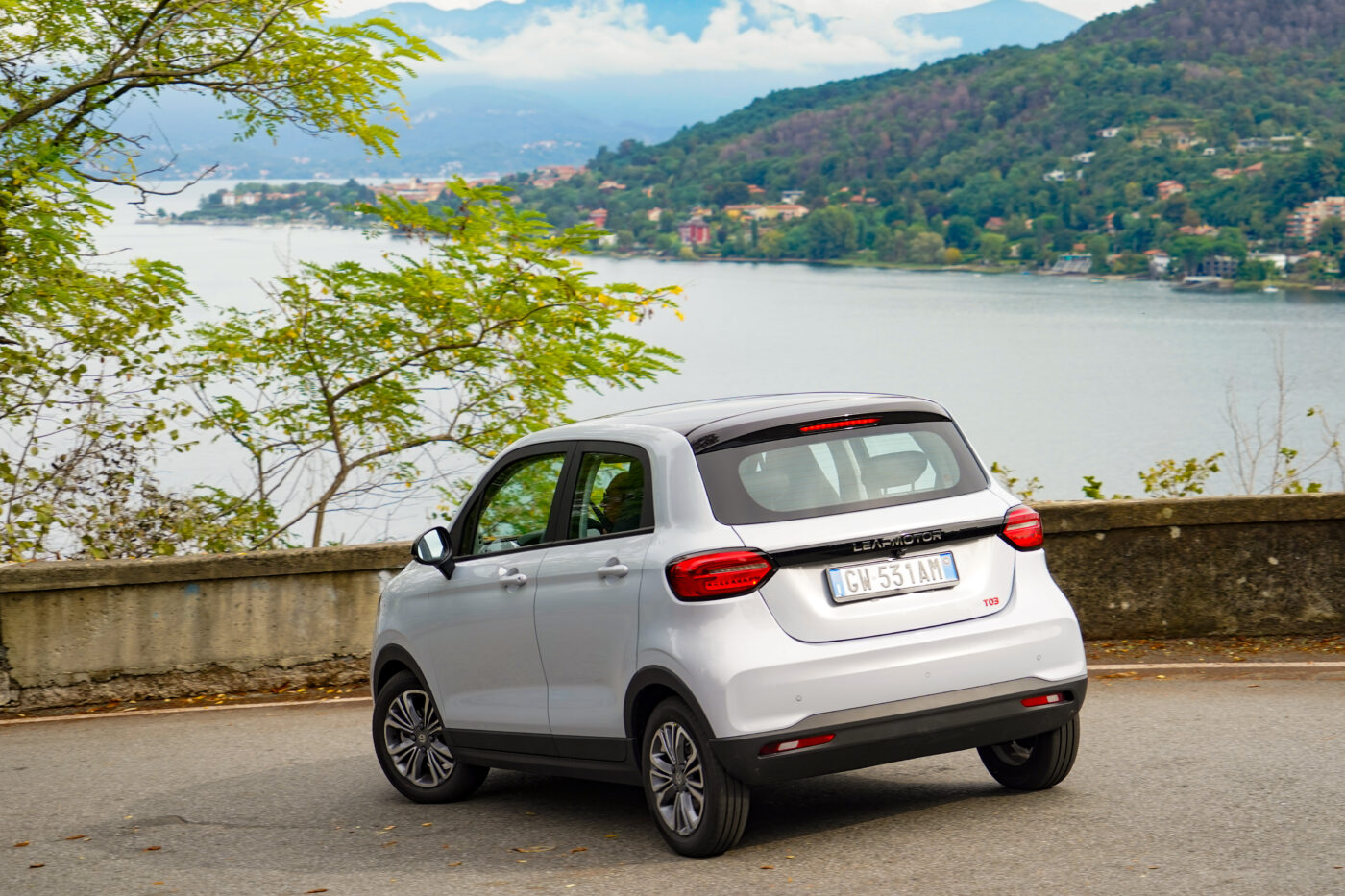





 Empathetic thanks to AI
Empathetic thanks to AI The new computing power also enables even more intelligent route planning by the navigation system, which is based on Google Maps in the new CLA and also uses AI to determine the fastest route, including charging stops. The navigation system not only reacts dynamically to the traffic situation or a change in driving style, but also takes into account the topography, wind conditions, ambient temperature and heating and cooling requirements in order to suggest charging stops en route more precisely and efficiently.
The new computing power also enables even more intelligent route planning by the navigation system, which is based on Google Maps in the new CLA and also uses AI to determine the fastest route, including charging stops. The navigation system not only reacts dynamically to the traffic situation or a change in driving style, but also takes into account the topography, wind conditions, ambient temperature and heating and cooling requirements in order to suggest charging stops en route more precisely and efficiently.
 Also as a combustion engine
Also as a combustion engine The more powerful all-wheel drive version CLA 350 4matic with a system output of 260 kW/354 hp (from CHF 63,900) does not consume much more in the WLTP cycle and thus achieves a standard range of up to 770 kilometers. However, the sporty performance (0 to 100 km/h in 4.9 seconds) is not often enjoyed. The basic CLA 200 version with a smaller battery (58 kWh) will be added at the end of the year. Thanks to the new 800-volt architecture, the charging capacity has been increased to a maximum of 320 kW. In the best case scenario, a range of up to 325 kilometers can be recharged in just 10 minutes.
The more powerful all-wheel drive version CLA 350 4matic with a system output of 260 kW/354 hp (from CHF 63,900) does not consume much more in the WLTP cycle and thus achieves a standard range of up to 770 kilometers. However, the sporty performance (0 to 100 km/h in 4.9 seconds) is not often enjoyed. The basic CLA 200 version with a smaller battery (58 kWh) will be added at the end of the year. Thanks to the new 800-volt architecture, the charging capacity has been increased to a maximum of 320 kW. In the best case scenario, a range of up to 325 kilometers can be recharged in just 10 minutes. And for those who prefer filling up to charging, there is no need to despair: the new CLA will also be available with a combustion engine from the end of the year, in the form of a 1.5-liter turbocharged petrol engine with a 48-volt mild hybrid system, which will be offered in three power levels and with front-wheel and all-wheel drive.
And for those who prefer filling up to charging, there is no need to despair: the new CLA will also be available with a combustion engine from the end of the year, in the form of a 1.5-liter turbocharged petrol engine with a 48-volt mild hybrid system, which will be offered in three power levels and with front-wheel and all-wheel drive.

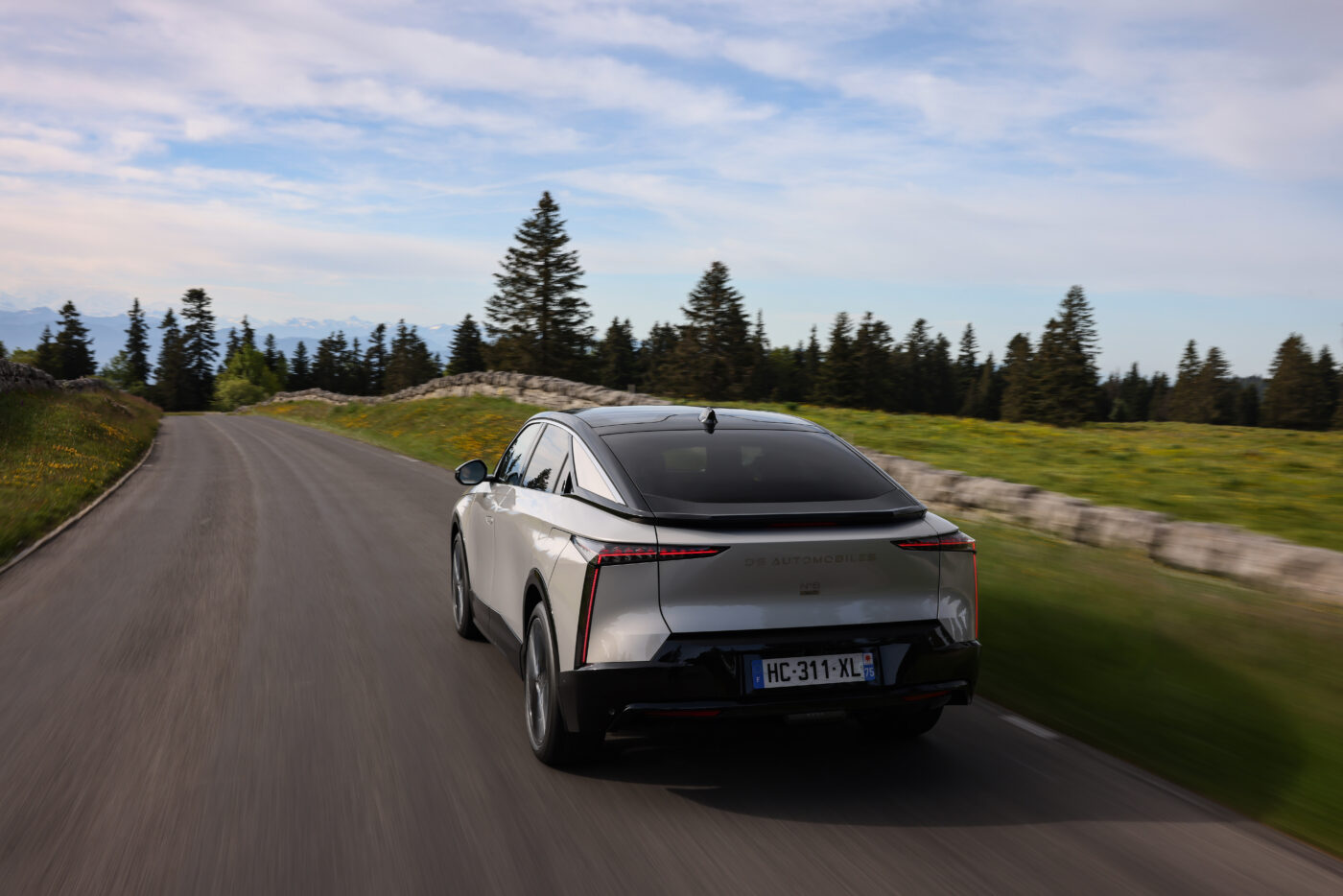
 Now DS is finally going all out and launching the No.8, a flagship that deserves the name. La Grande Nation finally has a vehicle that is the right size for a state limousine, even if the No.8 is not a limousine at all. At least not really. President Macron has already waved to the cameras from an armored version - the series version will hit the road in the fall. We have already been on a test drive.
Now DS is finally going all out and launching the No.8, a flagship that deserves the name. La Grande Nation finally has a vehicle that is the right size for a state limousine, even if the No.8 is not a limousine at all. At least not really. President Macron has already waved to the cameras from an armored version - the series version will hit the road in the fall. We have already been on a test drive.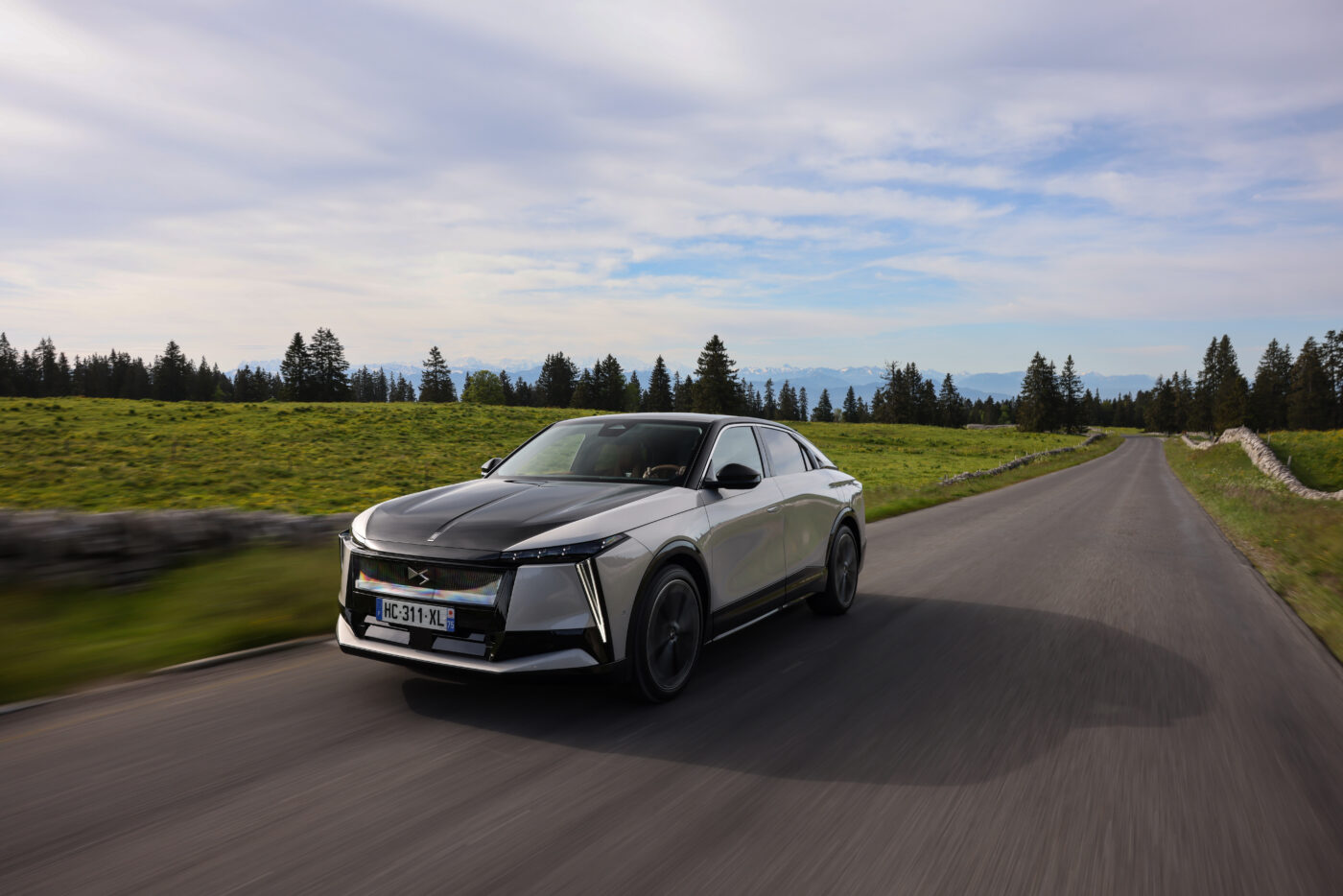 Up to 750 kilometers e-range
Up to 750 kilometers e-range The body shape and exterior design are as eccentric as you would expect from the DS brand: A kind of higher saloon or a flat SUV with a hatchback with a sabre-tooth light signature, like its sister company Peugeot already had. The interior is lined with high-quality materials and equipped with various pampering features.
The body shape and exterior design are as eccentric as you would expect from the DS brand: A kind of higher saloon or a flat SUV with a hatchback with a sabre-tooth light signature, like its sister company Peugeot already had. The interior is lined with high-quality materials and equipped with various pampering features. You sit very comfortably, nestled as if in a cocoon, and enjoy the pronounced silence on board. The steering is a little spongy in the center position, you have to get used to the special steering wheel, but the driving comfort in the No.8 is high, the performance is more than sufficient and you are sure to attract the attention of passers-by. The brand's new flagship is therefore likely to appeal not only to Emmanuel Macron, but also to Swiss car buyers.
You sit very comfortably, nestled as if in a cocoon, and enjoy the pronounced silence on board. The steering is a little spongy in the center position, you have to get used to the special steering wheel, but the driving comfort in the No.8 is high, the performance is more than sufficient and you are sure to attract the attention of passers-by. The brand's new flagship is therefore likely to appeal not only to Emmanuel Macron, but also to Swiss car buyers.